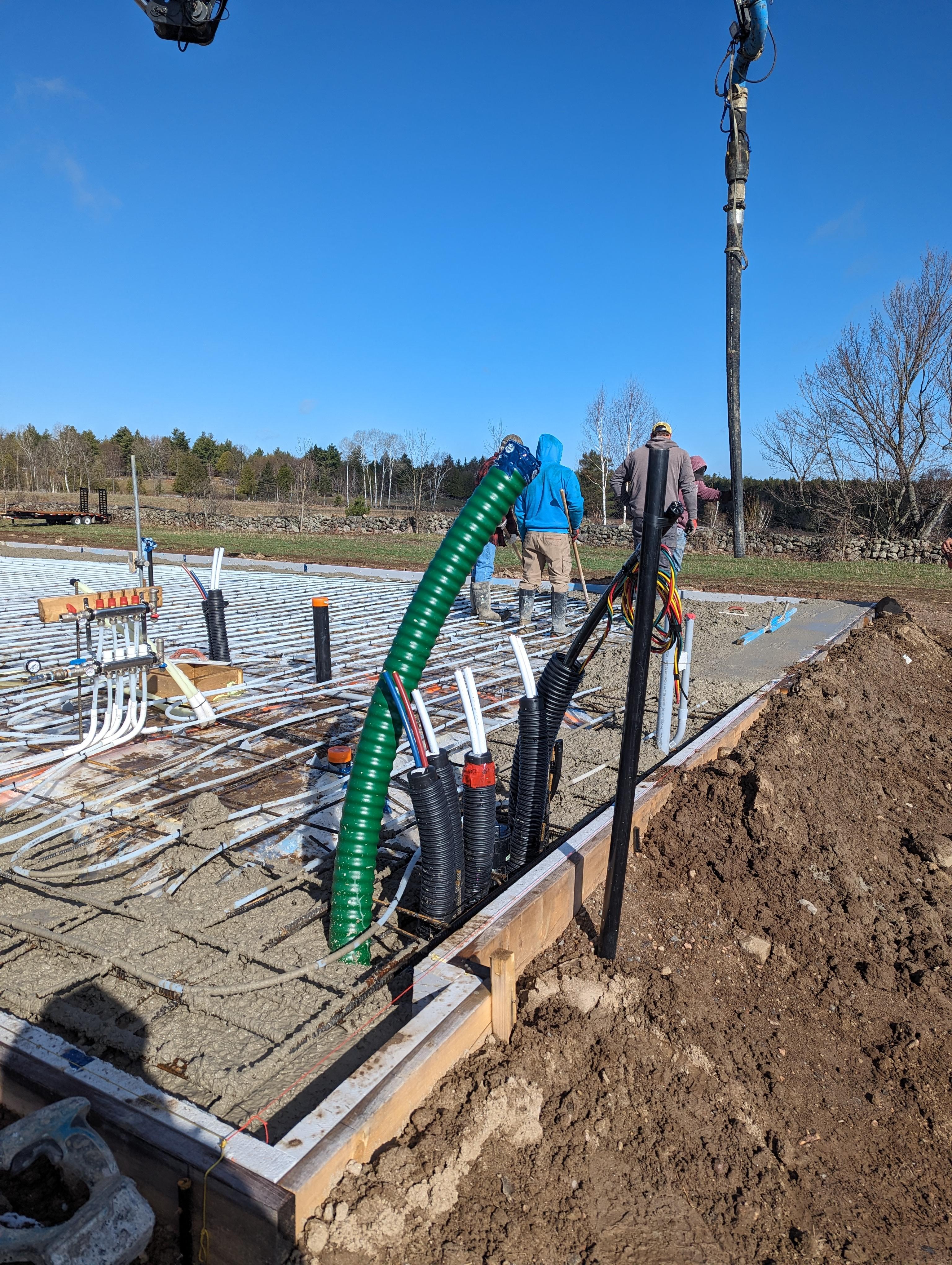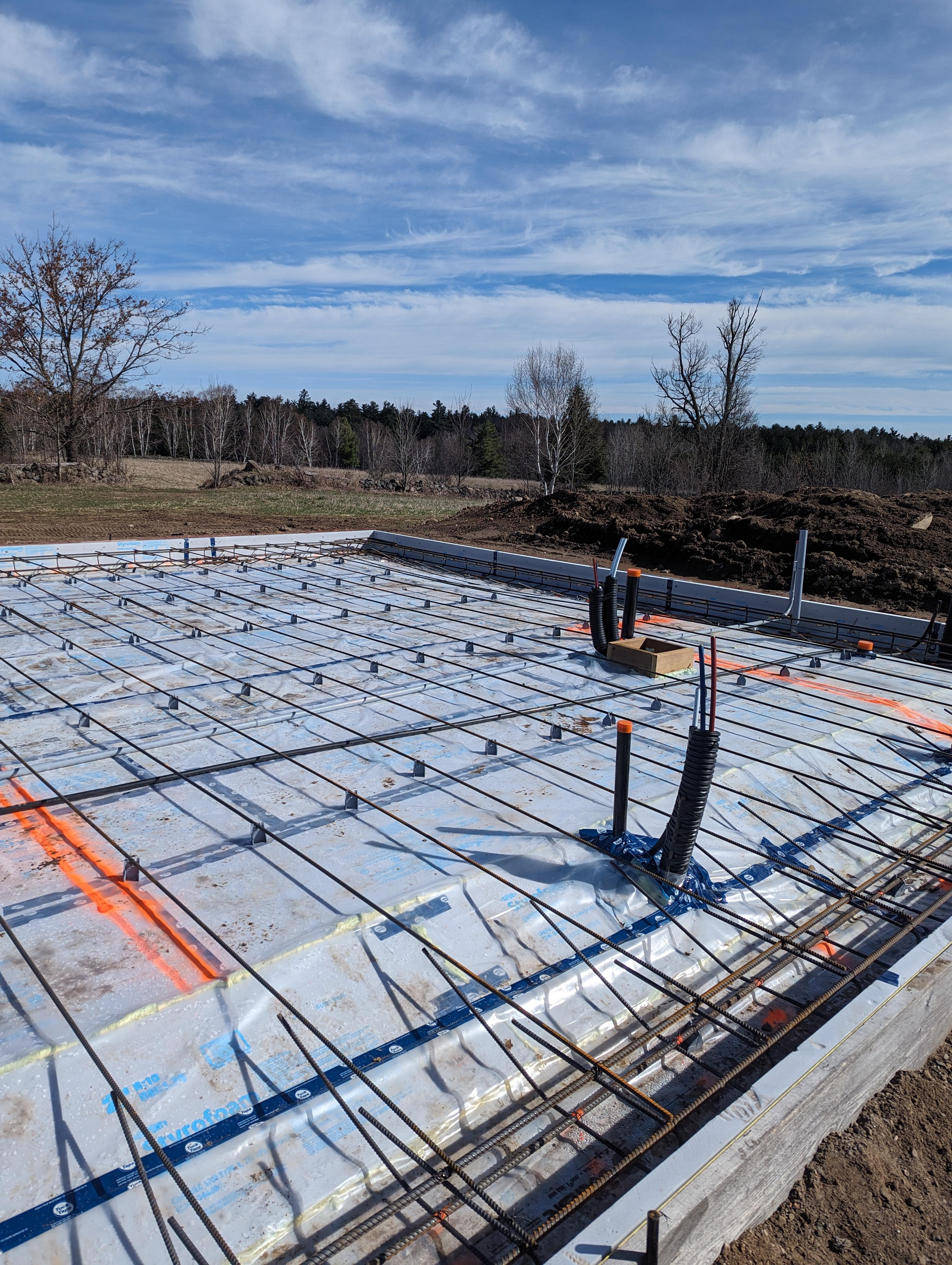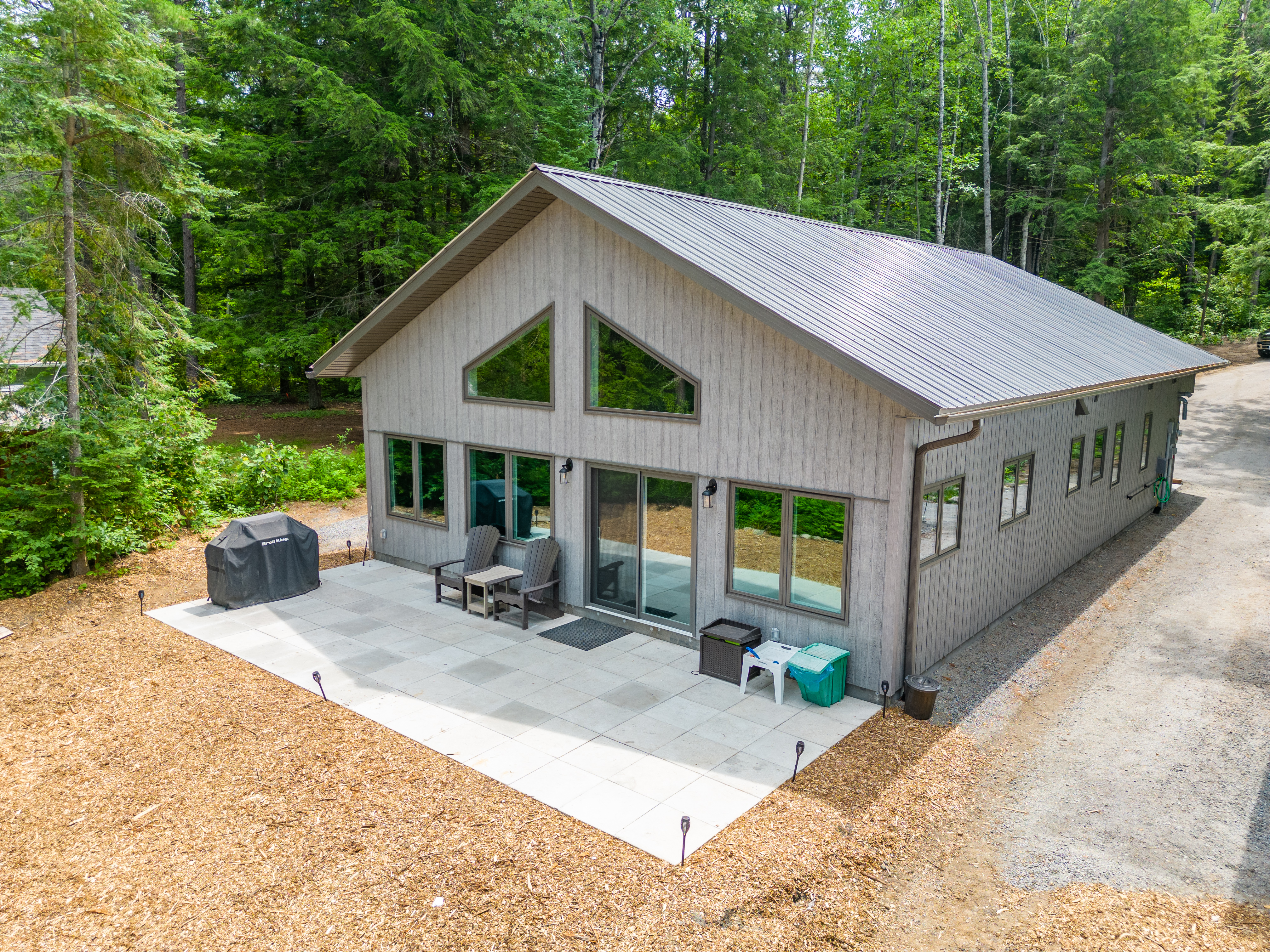What is a Slab on Grade Foundation?
A slab on grade foundation is a type of foundation where the concrete slab serves as both the subfloor and the foundation, resting directly on the ground. This method is commonly chosen over full basement or crawlspace foundations for reasons of accessibility and energy efficiency. Here, we'll explore the construction techniques, where slab on grade foundations are typically used, and the advantages and disadvantages of choosing this foundation for your home.

What is Slab on Grade Foundation?
A slab on grade foundation involves pouring a concrete slab directly onto a prepared base. While traditionally more common regions with warm climates and minimal frost depth, advances in insulation allow them to be constructed anywhere. When combined with an in floor radiant heat system, the thermal mass of the slab and energy efficiency of radiant heat allow it to perform very well in a climate of both extreme heat and cold like Eastern Ontario.
How is a Slab on Grade Constructed?
Frost Wall Construction
Frost wall construction is a common method to build slab on grade foundations. A frost wall is a traditional foundation wall that extends below the frost line to prevent heaving during freeze-thaw cycles. This construction method includes:
- Building a standard foundation wall around the perimeter
- Backfilling with compactable materials like sand or gravel
- Pouring the concrete slab inside the frost walls
As an example, garages attached to homes use this method for simplicity and stability.
Floating Slab Construction
Floating slab construction involves a concrete slab "floating" on a compacted, engineered gravel base. Key steps include:
- Excavating and filling the site with a compactable material, based on engineering specs for soil conditions
- Forming the slab, with thicker footings under load bearing walls and a thinner slab in all other areas.
- Placing rebar or welded wire mesh for reinforcement
- Adding rigid foam insulation if the building is heated

Pros and Cons of Slab on Grade Foundations
Pros:
- Accessibility: Ideal for single-level living without stairs, making it a perfect choice for aging-in-place designs.
- Thermal Efficiency: The concrete slab’s thermal mass helps regulate indoor temperatures, maintaining warmth during winter and coolness during summer. It’s often paired with radiant heating for enhanced comfort.
This slab on grade foundation for a new home in Combermere ON is ready for concrete - reinforcement and radiant heat tubing is in place.
Cons:
- Limited Storage: Without a basement, finding enough storage can be a challenge. This can often be mitigated with creative storage solutions.
- Space for Mechanicals: Since mechanical systems must be housed on the main floor, part of the living space needs to be allocated for utility rooms.
- Lot Constraints: Not suitable for sloping lots, as regrading can be costly and complex.

Conclusion
Choosing a slab on grade foundation can be a smart decision depending on your location, lot characteristics, and needs for accessibility. It offers benefits like improved energy efficiency and cost savings, but comes with potential trade-offs like limited storage and space for mechanical systems.
Optimize your home’s foundation by understanding the conditions that suit a slab on grade, and consult with a local builder or engineer to make the best decision for your new home.


